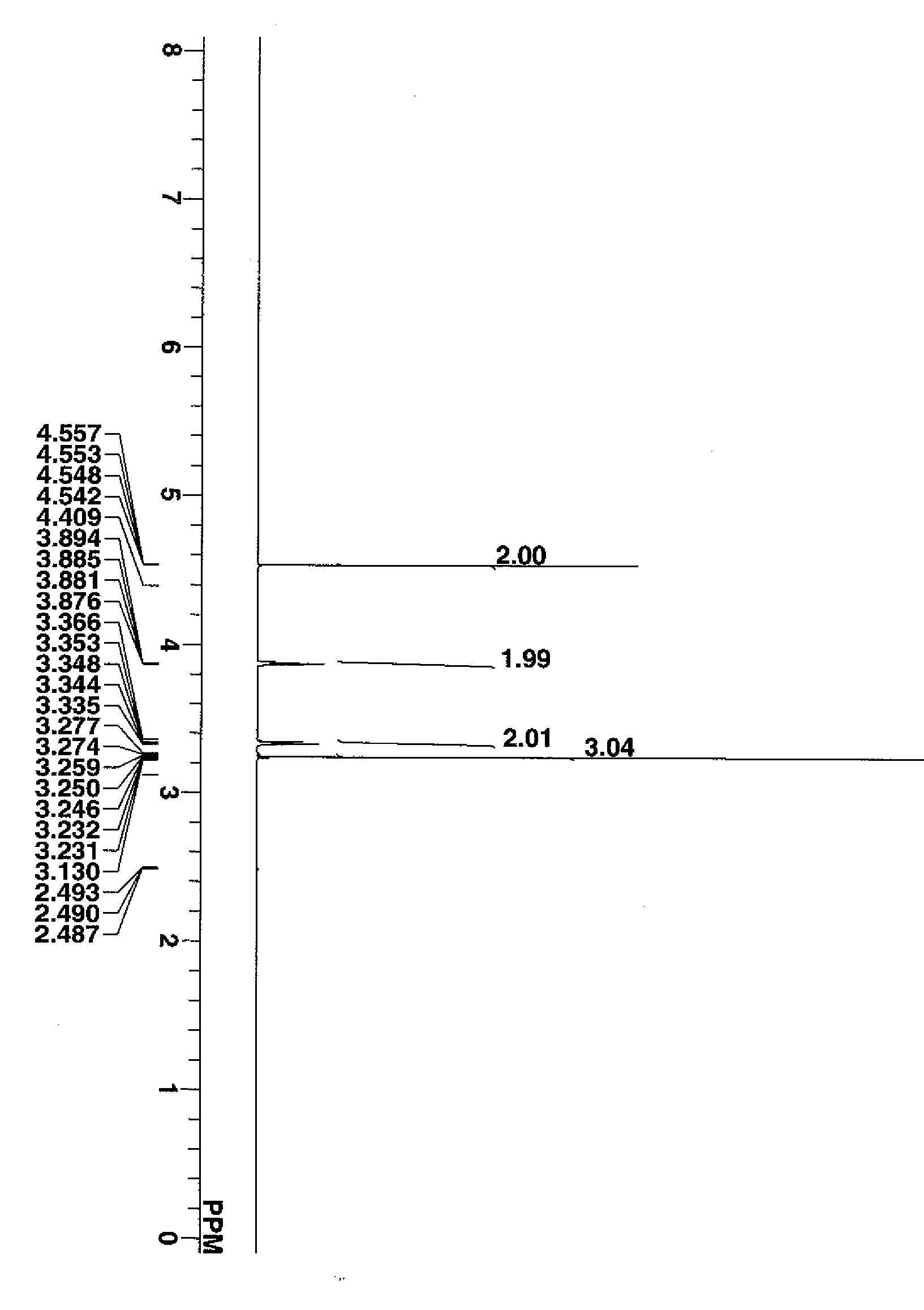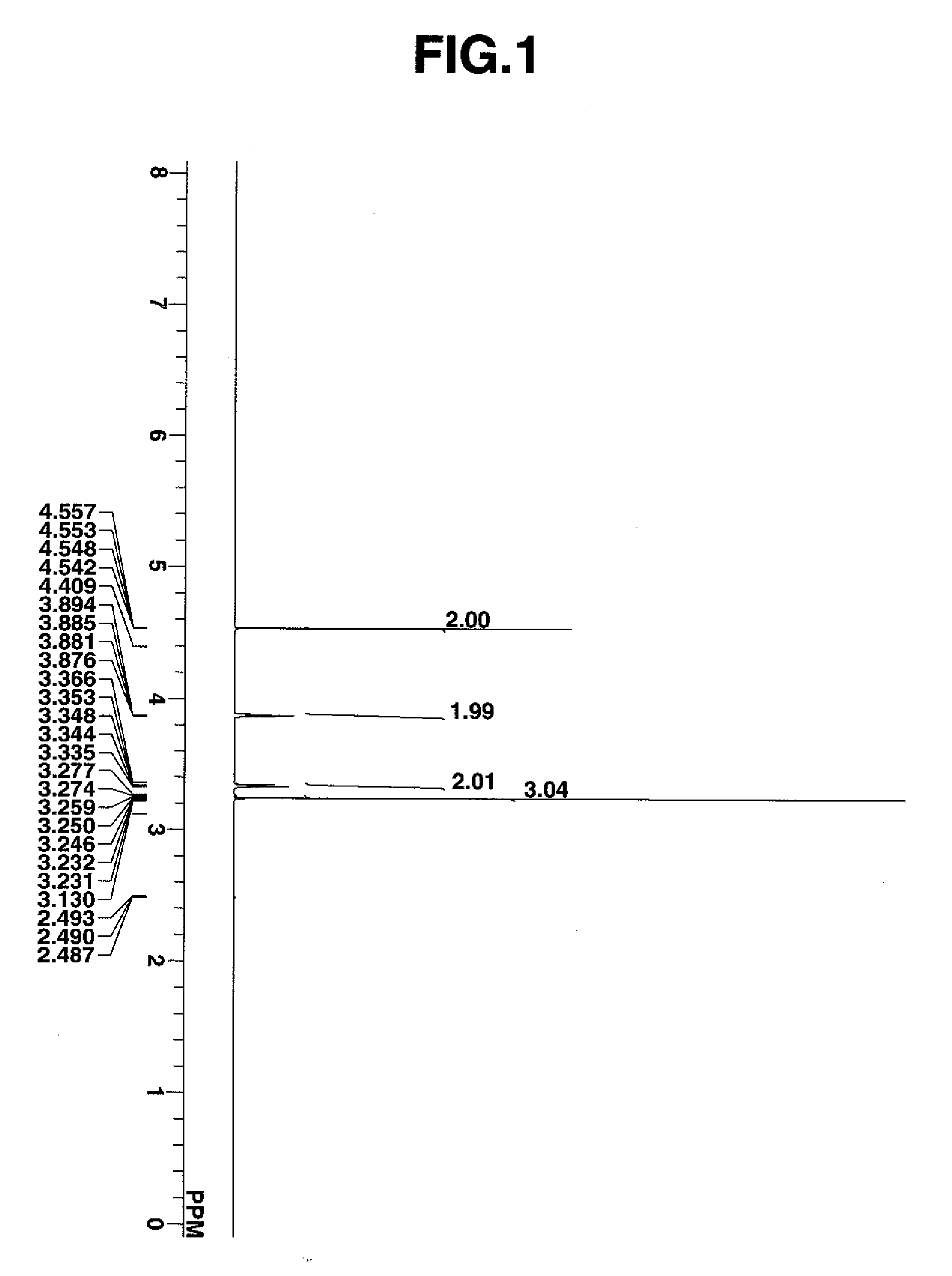Resist composition and patterning process
- Summary
- Abstract
- Description
- Claims
- Application Information
AI Technical Summary
Benefits of technology
Problems solved by technology
Method used
Image
Examples
synthesis example 1
Synthesis of tris(2-(methoxymethoxy)ethyl)amine oxide
Quencher 1
[0077] 28.1 g (0.1 mole) of tris(2-(methoxymethoxy)ethyl)-amine was dissolved in 85 g of dichloromethane, which was ice cooled. To the solution, 26.5 g (0.1 mole) of 65% pure m-chloroperbenzoic acid in 250 g of dichloromethane was added dropwise at such a rate that the mixture might not exceed 5° C. The mixture was allowed to mature for one hour at room temperature. The reaction solution was concentrated below 30° C. and the residue was purified by column chromatography (basic alumina, elute; dichloromethane / methanol). The eluate was concentrated whereupon the desired compound solidified. The amount was 27.3 g and the yield was 92*.
[0078] The compound was analyzed by proton nuclear magnetic resonance spectroscopy (1H-NMR), with the diagram shown in FIG. 1. It was also analyzed by infrared (IR) absorption spectroscopy.
[0079] IR (KBr); 3392, 2948, 2892, 2825, 1467, 1444, 1214, 1155, 1110, 1043, 917 cm−1
synthesis example 2
Synthesis of 2,2′,2″-nitrilotriethyl propionate N-oxide
Quencher 2
[0080] 30.5 g of 2,2′,2″-nitrilotriethyl propionate was dissolved in 85 g of dichloromethane, which was ice cooled. To the solution, 27.1 g of 65% pure m-chloroperbenzoic acid in 250 g of dichloromethane was added dropwise at such a rate that the mixture might not exceed 5° C. The mixture was allowed to mature for one hour at room temperature. The reaction solution was concentrated below 30° C., and the residue was purified by column chromatography (basic alumina, elute: dichloromethane / methanol). The eluate was concentrated whereupon the desired compound solidified. The amount was 24.8 g.
synthesis example 3
Synthesis of N-2-((2-methoxyethoxy)methoxy)ethylmorpholine N-oxide
Quencher 3
[0081] 16.1 g of N-2-((2-methoxyethoxy)methoxy)ethylmorpholine was dissolved in 85 g of dichloromethane, which was ice cooled. To the solution, 24.9 g of 65% pure m-chloroperbenzoic acid in 250 g of dichloromethane was added dropwise at such a rate that the mixture might not exceed 5° C. The mixture was allowed to mature for one hour at room temperature. The reaction solution was concentrated below 30° C., and the residue was purified by column chromatography (basic alumina, elute: dichloromethane / methanol). The eluate was concentrated whereupon the desired compound solidified. The amount was 15.5 g.
[0082] Quenchers 1 to 3 synthesized above have the structural formulae shown below.
PUM
 Login to View More
Login to View More Abstract
Description
Claims
Application Information
 Login to View More
Login to View More - R&D
- Intellectual Property
- Life Sciences
- Materials
- Tech Scout
- Unparalleled Data Quality
- Higher Quality Content
- 60% Fewer Hallucinations
Browse by: Latest US Patents, China's latest patents, Technical Efficacy Thesaurus, Application Domain, Technology Topic, Popular Technical Reports.
© 2025 PatSnap. All rights reserved.Legal|Privacy policy|Modern Slavery Act Transparency Statement|Sitemap|About US| Contact US: help@patsnap.com



